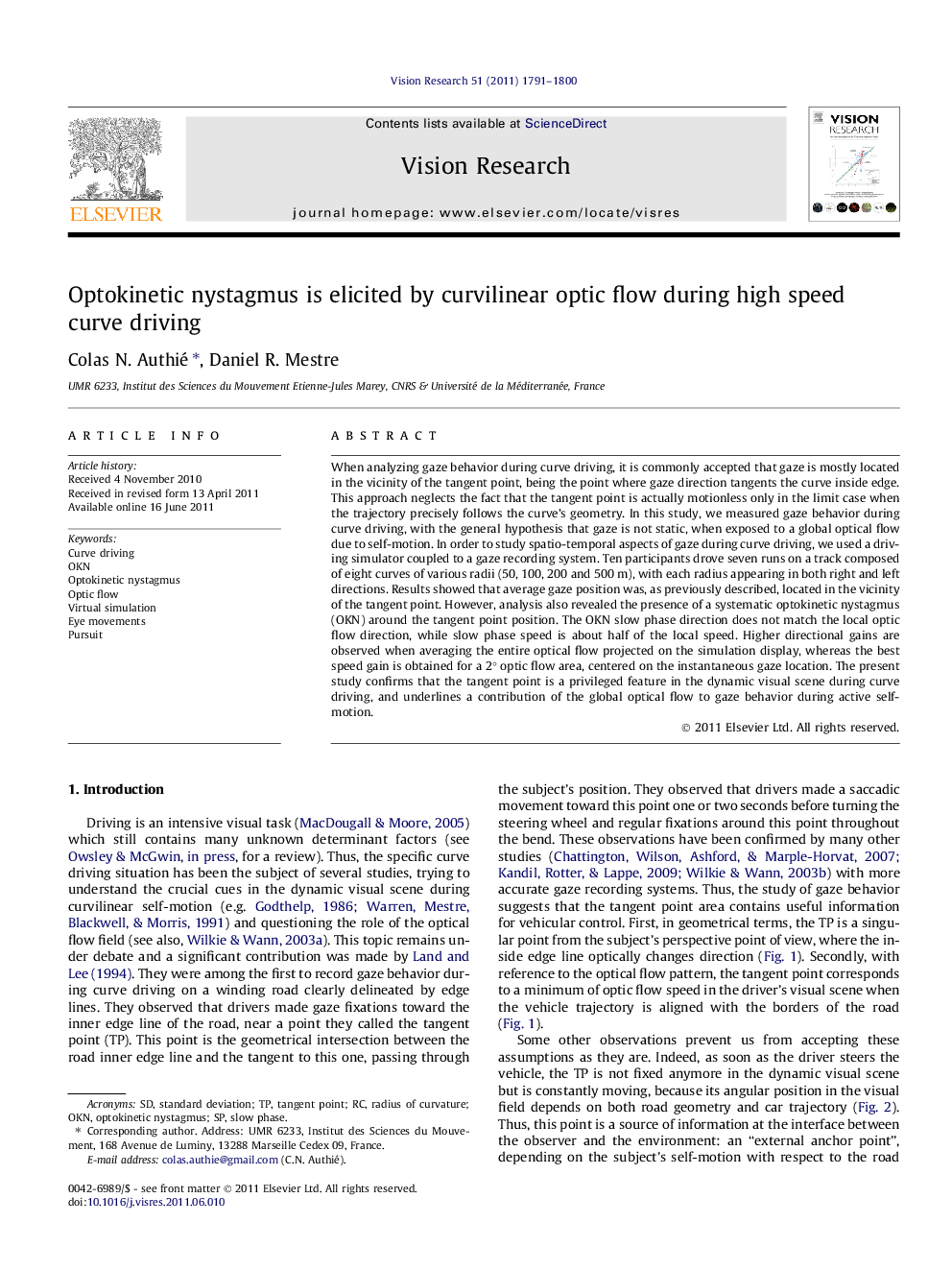| کد مقاله | کد نشریه | سال انتشار | مقاله انگلیسی | نسخه تمام متن |
|---|---|---|---|---|
| 4034095 | 1263427 | 2011 | 10 صفحه PDF | دانلود رایگان |

When analyzing gaze behavior during curve driving, it is commonly accepted that gaze is mostly located in the vicinity of the tangent point, being the point where gaze direction tangents the curve inside edge. This approach neglects the fact that the tangent point is actually motionless only in the limit case when the trajectory precisely follows the curve’s geometry. In this study, we measured gaze behavior during curve driving, with the general hypothesis that gaze is not static, when exposed to a global optical flow due to self-motion. In order to study spatio-temporal aspects of gaze during curve driving, we used a driving simulator coupled to a gaze recording system. Ten participants drove seven runs on a track composed of eight curves of various radii (50, 100, 200 and 500 m), with each radius appearing in both right and left directions. Results showed that average gaze position was, as previously described, located in the vicinity of the tangent point. However, analysis also revealed the presence of a systematic optokinetic nystagmus (OKN) around the tangent point position. The OKN slow phase direction does not match the local optic flow direction, while slow phase speed is about half of the local speed. Higher directional gains are observed when averaging the entire optical flow projected on the simulation display, whereas the best speed gain is obtained for a 2° optic flow area, centered on the instantaneous gaze location. The present study confirms that the tangent point is a privileged feature in the dynamic visual scene during curve driving, and underlines a contribution of the global optical flow to gaze behavior during active self-motion.
► Gaze movement of participants driving in curves on a fixed-base simulator are recorded.
► Drivers’ gaze, featuring a systematic OKN, is located in the tangent point area.
► OKN seems to be related to global and local characteristics of the optical flow.
► The pursuit phases of OKN can then constrain models of vehicle control.
Journal: Vision Research - Volume 51, Issue 16, 15 August 2011, Pages 1791–1800